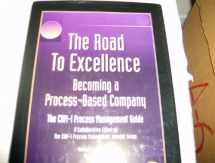
The Road to Excellence: Becoming a Process-Based Company
Book details
Summary
Description
The goal of this book is to understand the importance of process management in planning and achieving the objectives of the corporation. The authors are process strategists, implementers and practitioners from various manufacturing and service companies, consulting firms, and universities, who wish to share their experiences and insights on the advantages of becoming a process-centered company and on the considerations that should be made in migrating from a functional to a process-focused organization. Functionally-focused organizations are often ineffective and inefficient when work must be coordinated across traditional functional boundaries. This is due to the fact that the needs of the customer are often secondary to the goals of each functional area, thereby creating functional silos and limiting the creation of value within the company. Worse still, the customer may be ignored and decide to go elsewhere.
In contrast to a functional focus, a process-focused organization requires that every executive, manager and process performers constantly consider the needs of the customer in everything that is done. Boundaries between functions are torn down as the organization creates core processes that involve personnel, technology and information across numerous functions for the purpose of adding value to the goods and services that a company creates, thereby maximizing customer satisfaction. A process-focused approach enable organizations to attain a competitive advantage through the integration of otherwise disconnected initiatives.
The Guide is organized into four sections:
Section 1 - Creates the strategic vision for process management; clarifies the hierarchy and the concept of core process development; provides suggestions for introducing process management within the organization and addresses organizational and behavioral issues; and defines the roles and responsibilities of process owners, controllers and performers.
Section 2 - Provides guidance on migrating from a functionally-focused to a process-focused organization using a 4-step program to assess, develop, implement and embed process management within an organization.
Section 3 - Introduces the concepts of sustaining process management through analyzing current and future-state processes in relationship to customers and markets; develops activity and process metrics relating value, time, quality, flexibility and functionality to maintain customer focus; and provides guidance for using continuous process improvement in strategic, tactical and operational planning and performance.
Section 4 - Conclusions and summary of the Guide.
The book is intended for business publication readers with emphasis on companies of all sizes that are exploring, planning and implementing process management in their organizations. This Guide applies both to service and manufacturing firms and target readers should be CEOs, COOs, CFOs, Support Function Leaders, General Managers, and Managers throughout a firm.


We would LOVE it if you could help us and other readers by reviewing the book
Book review



